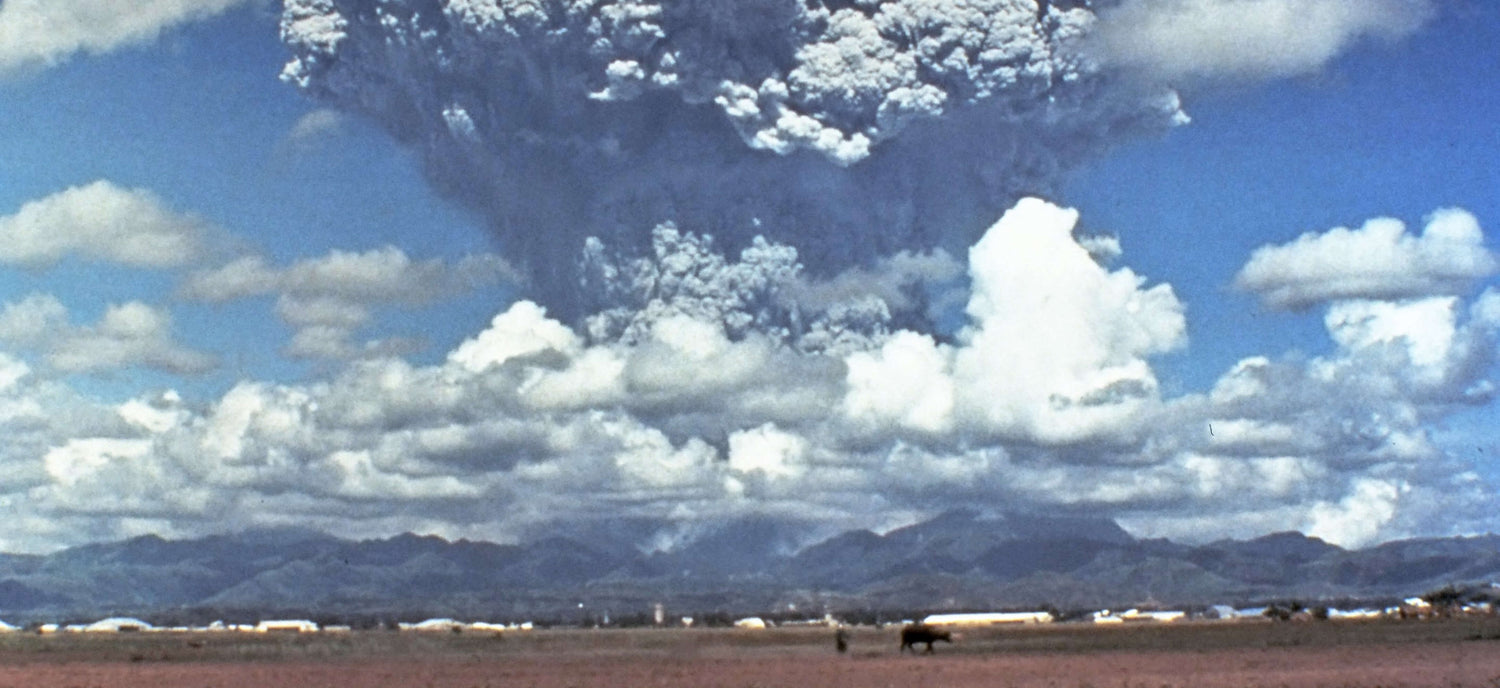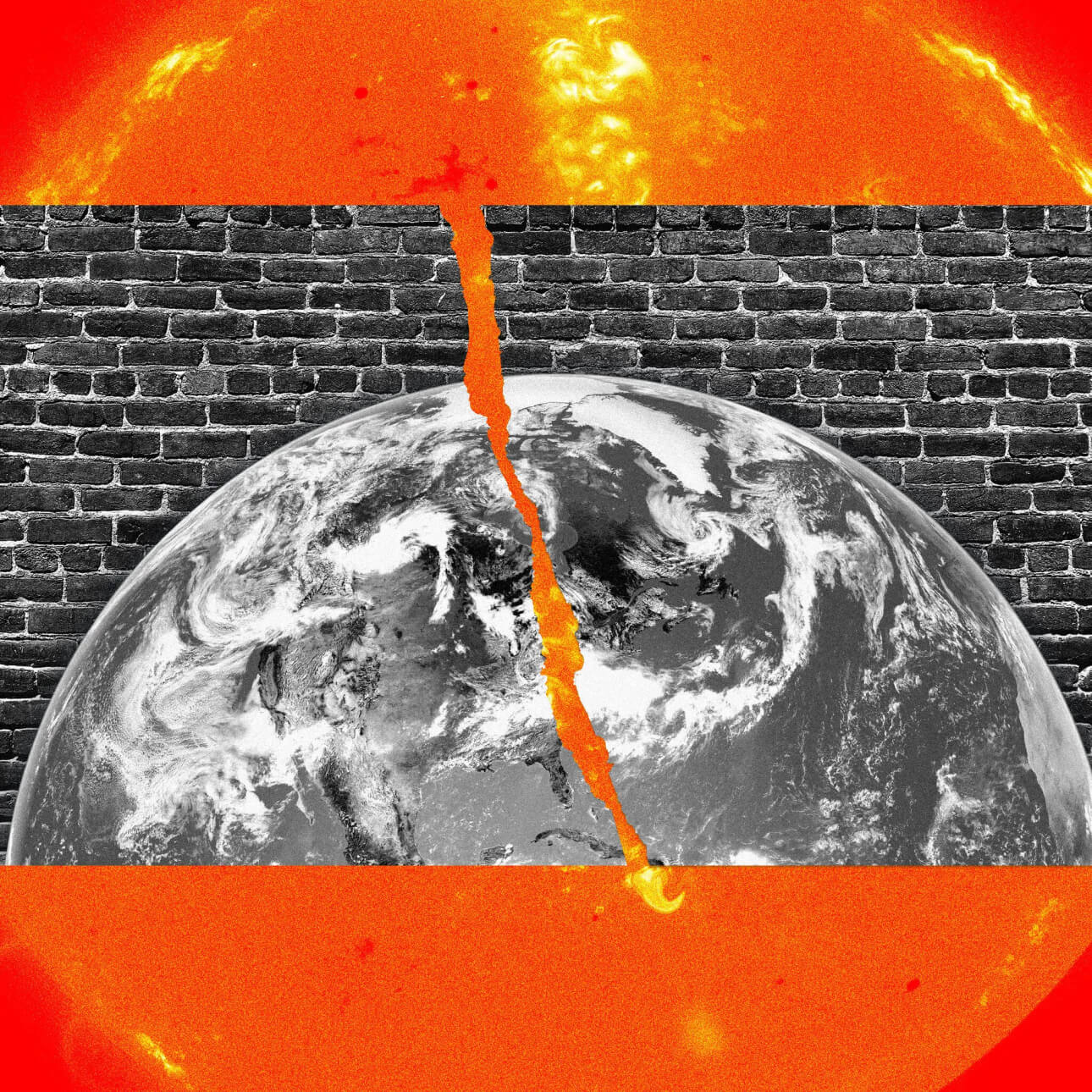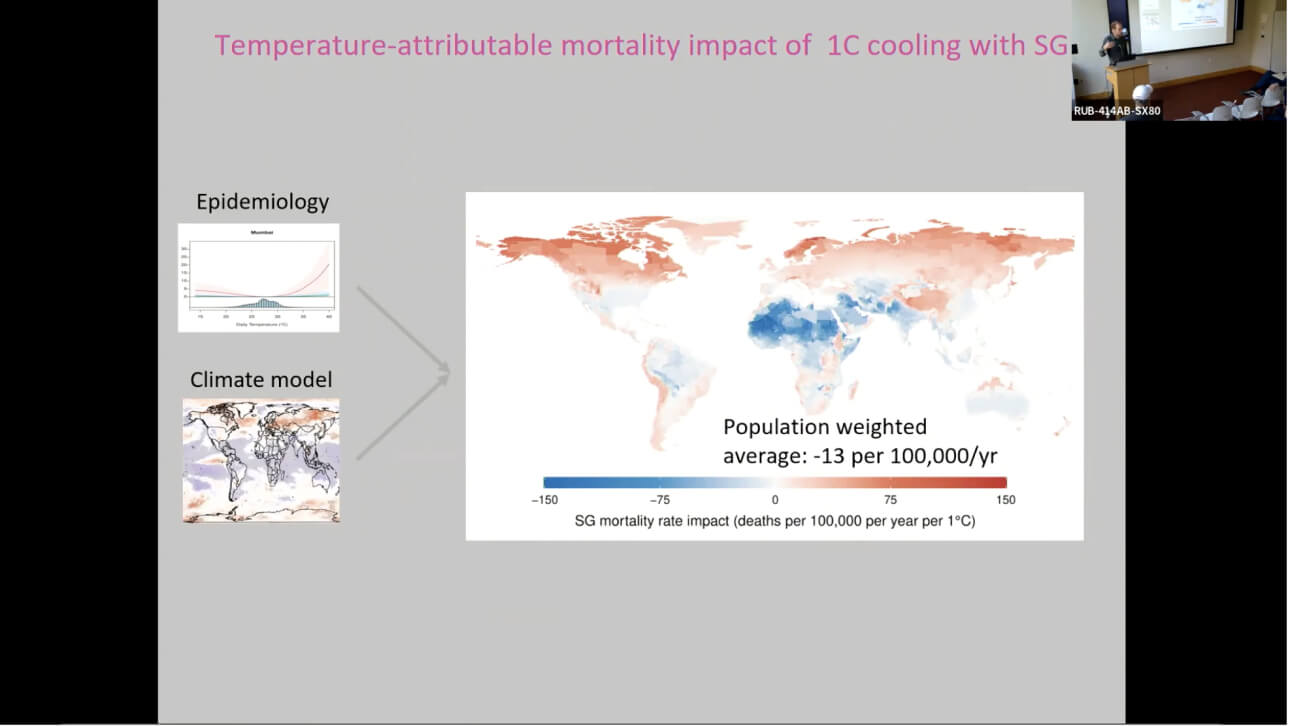Current climate efforts need time, a luxury only stratospheric aerosol injection can provide
We believe that SAI is the immediate, necessary solution to cool the planet and buy us time to transition to a more sustainable future.
Make Sunsets deploys reflective clouds in the stratosphere to cool Earth — a bold solution inspired by volcanic eruptions in nature.

Mount Pinatubo 1991: Nature's cooling masterstroke, injecting 20 million metric tons of SO₂ and chilling Earth by 0.9°F (0.5°C) for a year. Note: farmer and cow plowing a field in the foreground.
Image Credit: Dave Harlow, USGS
A type of volcano called a stratovolcano has naturally cooled the Earth for millions of years. Mount Fuji in Japan is probably the most famous, but in 1991, Mt. Pinatubo's eruption cooled the Earth by 0.9F (0.5C) for over a year!
Some may call it solar engineering– we call it an opportunity to reverse global warming
Potential benefits of stratospheric aerosol injection
Rapid cooling: SAI could provide relatively quick cooling effects on the Earth's surface, helping to offset global warming.
Emissions from volcanic eruptions have been cooling the Earth for millions of years, like Mt. Pinatubo in 1991. We are simply mimicking Mother Nature.
Cost-effectiveness: The implementation of SAI is considered relatively inexpensive compared to other large-scale climate change mitigation strategies.
For comparison, to offset a ton of CO₂ via Direct air capture (DAC) ranges from $100 to $600, with the potential to decrease as technology advances.
Supplement to other strategies: SAI could serve as a temporary measure while longer-term efforts to reduce greenhouse gas emissions are being developed and deployed.
Like nuclear, fusion, solar, wind, more trees, and sucking CO₂ out of the air.
Potential risks of stratospheric aerosol injection
Uncertain effectiveness: The full impact of SAI on global temperatures and climate remains uncertain, and it could have unintended consequences on regional climate patterns.
Counter point: We’re already headed towards an increase in catastrophic climate disasters as the world heats up, we need to intervene before it’s too late.
Ozone depletion: Injecting aerosols into the stratosphere could potentially harm the ozone layer, which protects life on Earth from harmful ultraviolet radiation.
Counter point: Dr. David W. Fahey, Director of the National Oceanic and Atmospheric Administration’s Chemical Sciences Laboratory revealed that studies show sulfur aerosols from stratospheric aerosol injection could impact the ozone layer, but not catastrophically. The 1991 Mount Pinatubo volcanic eruption demonstrated the ozone layer's resilience after temporarily cooling the planet by 0.5°C. Despite uncertainties, these findings suggest geoengineering methods like SAI could be explored without causing irreversible damage to the ozone layer. (Source: The New York Times)
Termination effect: If SAI were to be suddenly stopped, a rapid rebound in global temperatures might occur, which could be highly disruptive to ecosystems and human societies.
Counter point to reduce the likelihood of termination effect:
- Gradual phase-out
- Combine SAI with mitigation and adaptation efforts
- Continuous monitoring and adaptive management
Moral hazard: The implementation of SAI could potentially weaken the urgency to reduce greenhouse gas emissions, thereby exacerbating the long-term problem of climate change.
Counter point: Until renewable energy is the same price and availability as fossil fuels most humans will chose the cheapest and convenient option.
International governance challenges: SAI could lead to geopolitical tensions and disagreements about its deployment, regulation, and potential side effects.
Counter point: Licensing the deployment of large scale SAI with clear guidelines can address these challenges.


